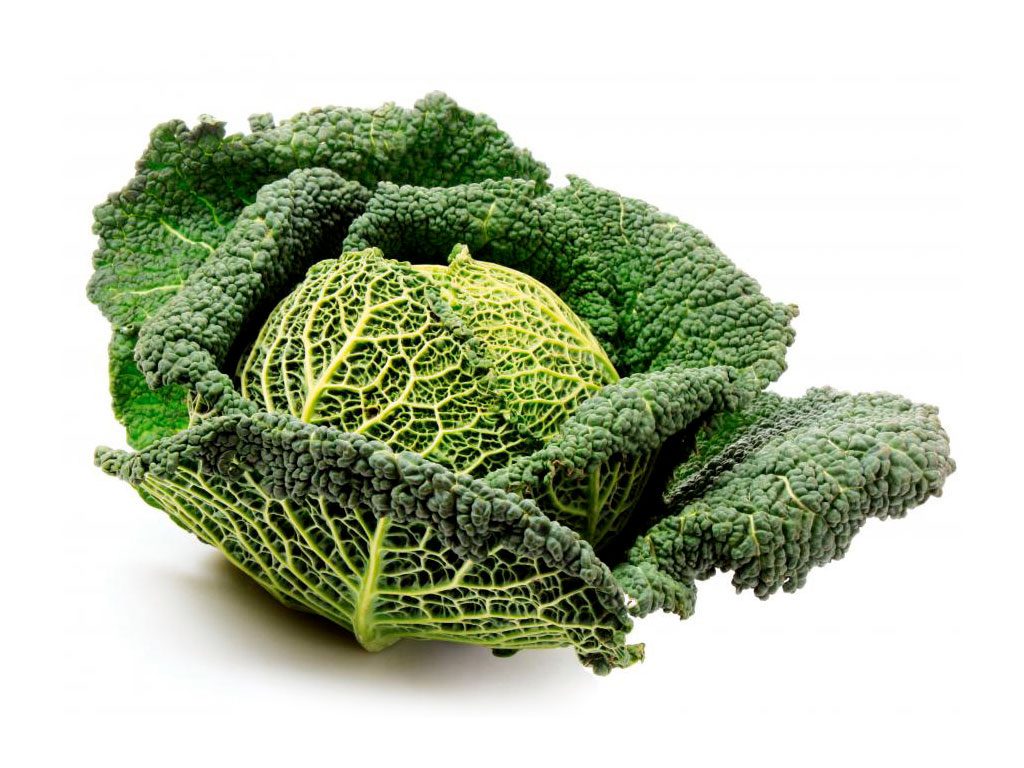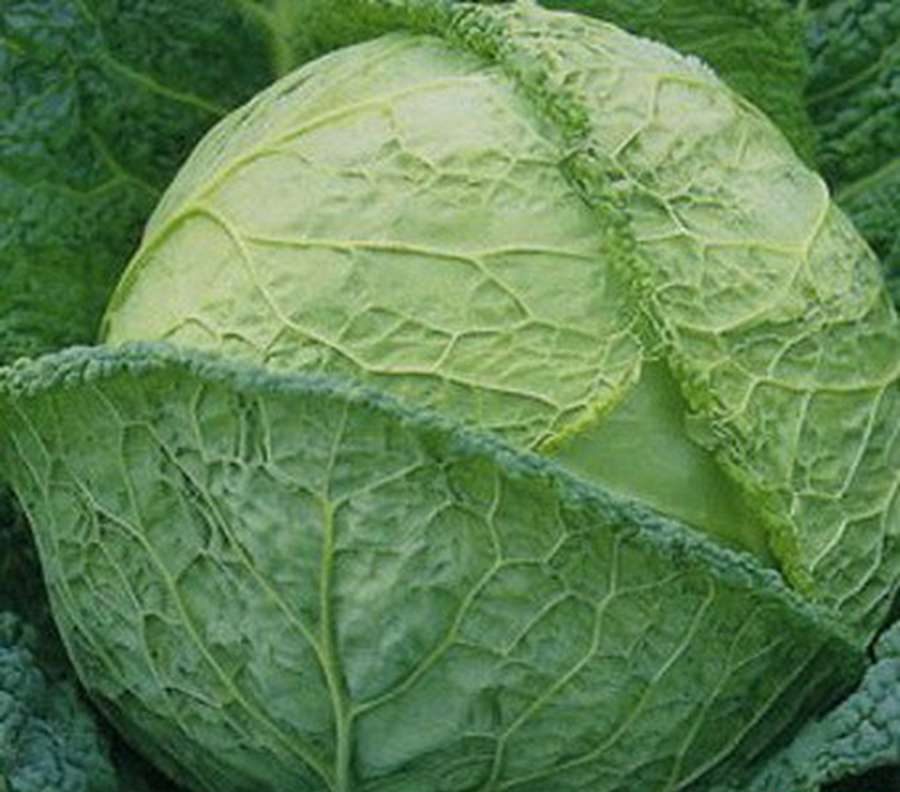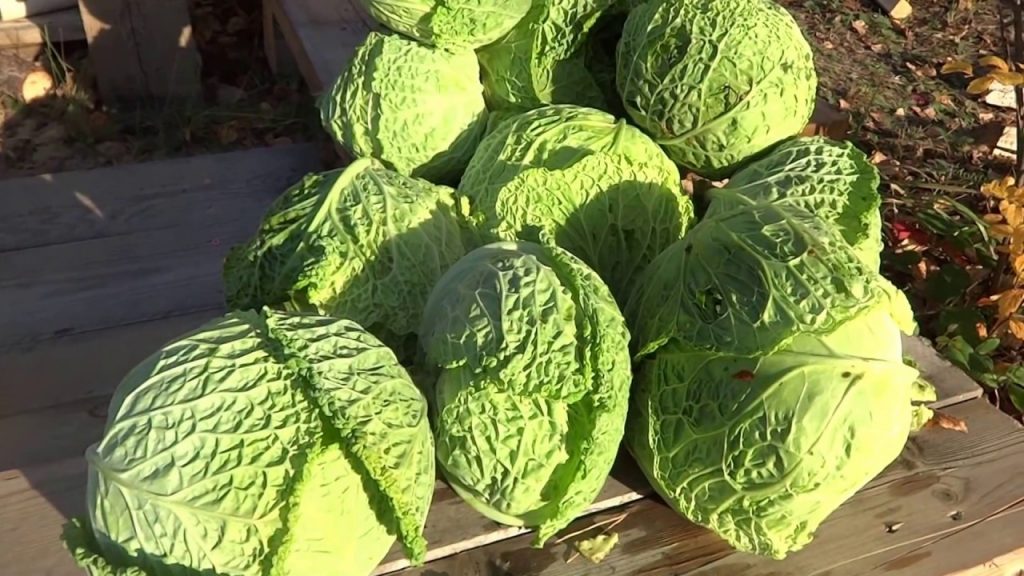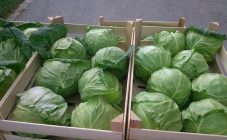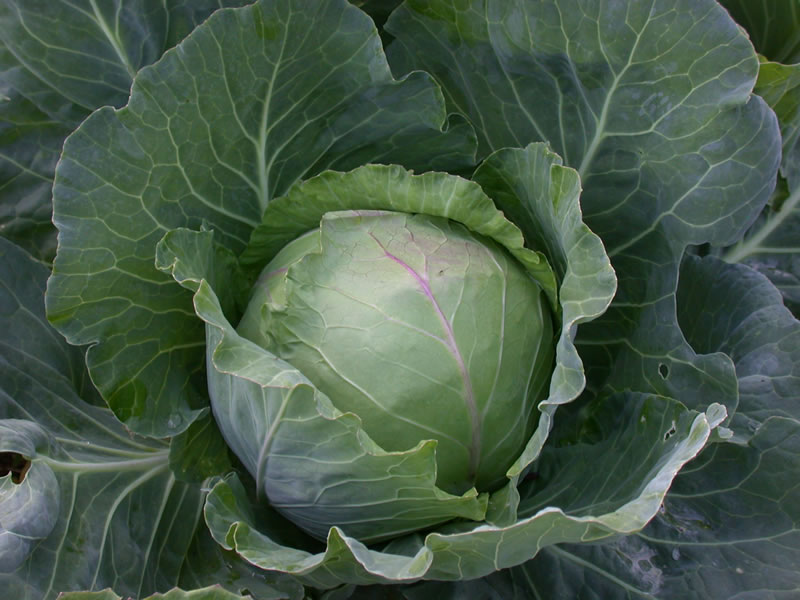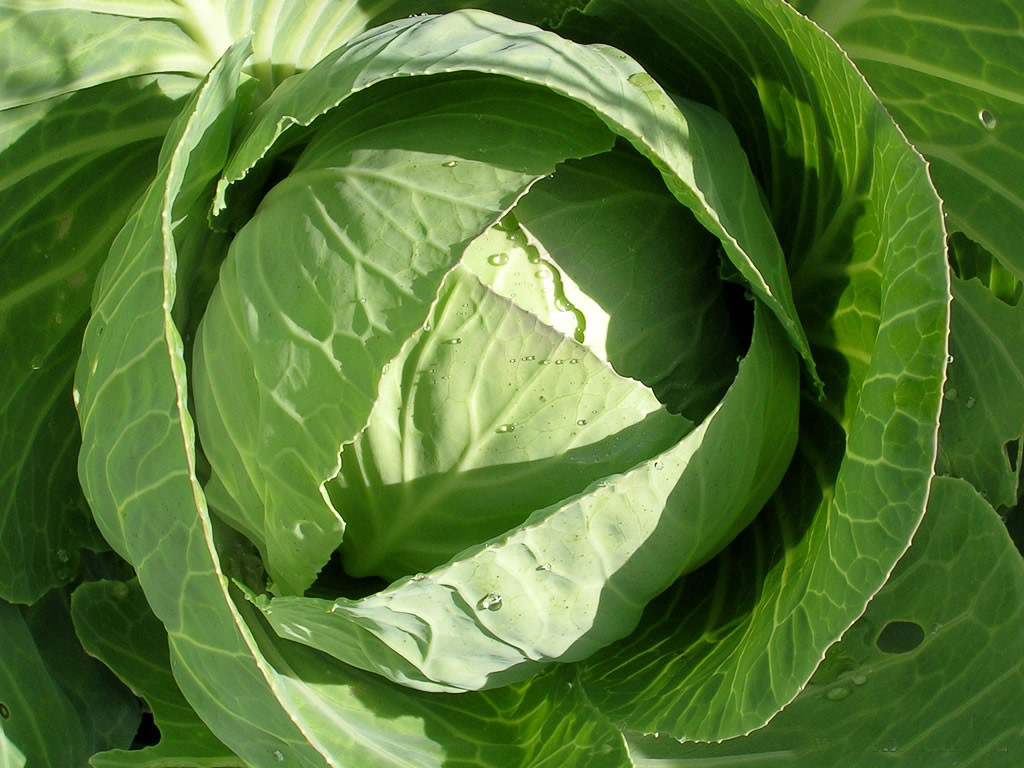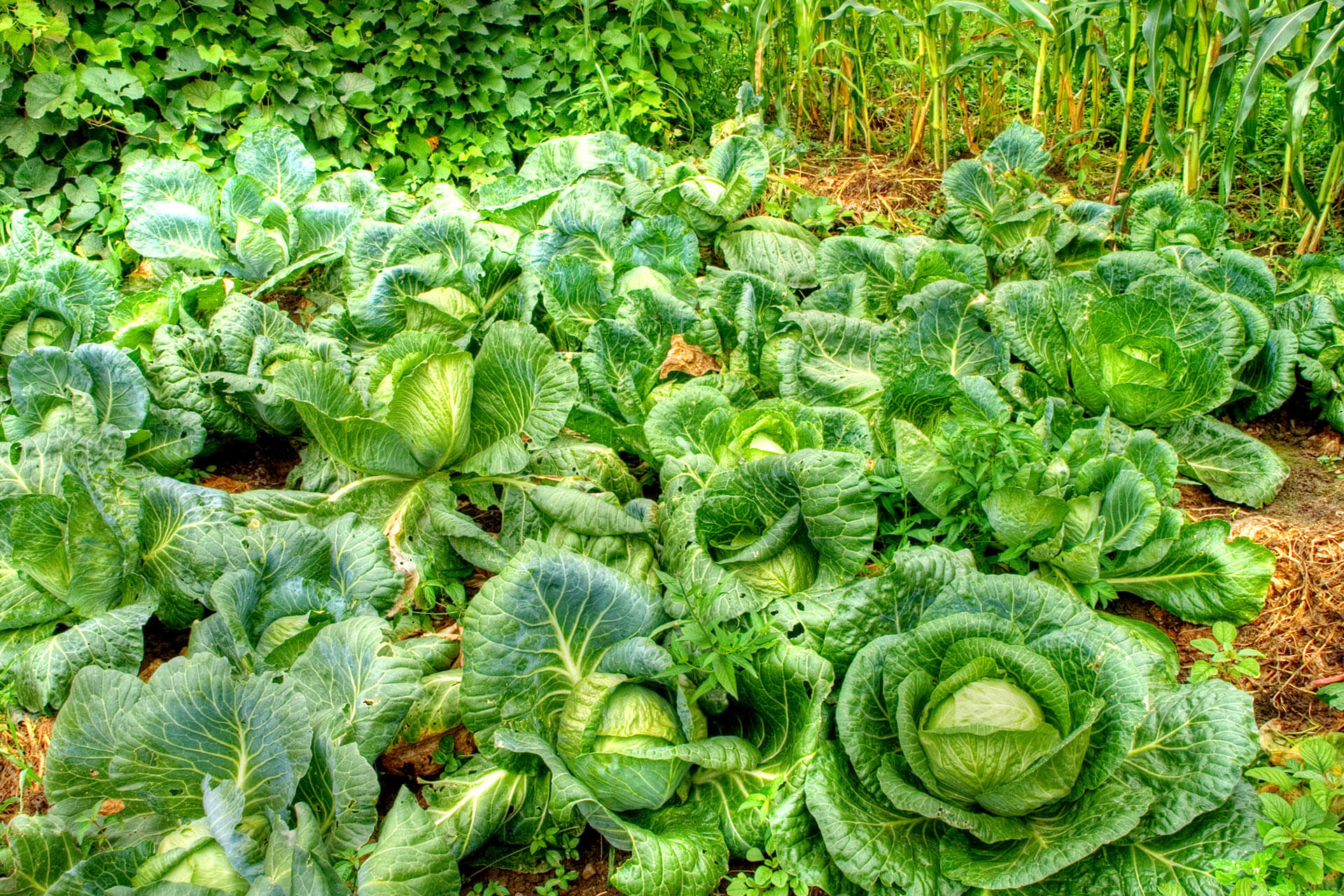Content:
Savoy cabbage is as similar to cabbage as it is different from it. At first glance, these differences seem insignificant, but upon closer examination, it becomes obvious that this variety is a separate variety.
First of all, two vegetable crops differ in appearance: Savoy cabbage leaf - with pronounced membranes, corrugated structure, it has a more intense color. Its density is much lower than that of Amager, while it is softer and juicier, making it suitable for salad all year round.
Savoy cabbage tastes similar to Peking cabbage or early cabbage varieties. Another significant detail is that only benefits are gained from the consumption of white-headed varieties, and Savoy is also capable of bringing harm when consumed during periods of exacerbation of gastrointestinal diseases.
Though slightly, their cultivation is also different.
Culture information
Brassica oleracea L. Sabauda belongs to a separate cultivar group, popular in Western Europe, but rarely grown in Eastern Europe, in particular in Russia.
If in some cases it is nevertheless planted on personal plots, then never in the fields. As the name of the variety suggests, its homeland is Northwestern Italy, the Cisalpine Lowland, with its center in the city of Savoie. This is an artificially bred variety by medieval Piedmontese breeders, presumably in the middle of the XIV century, quickly spreading throughout Europe, it came to Russia only 500 years later, in the XIX century.
Characteristics and features of the variety
The common name "Savoy cabbage" unites more than 20 different varieties, among which there are domestic ones, related to it, but differing in certain characteristics, in particular, early maturity. Like any other cabbage, Savoy cabbage is divided into 3 groups of varieties: early, mid-season and late.
Each such group has its own leaders and its outsiders, the latter need not pay attention and delve into their description, only the best should be considered:
- Savoy cabbage Vologda lace is an early maturing domestic variety that ripens in the period from 105-115 days after planting in the ground. It has a high yield, the heads reach an average of 1-1.5 kg in weight, up to a maximum of 2.2 kg;
- Golden early cabbage is one of the earliest ripening varieties, with a growing season of 90 to 95 days after planting in the garden. Its disadvantage is a low yield and a loose head, growing on average from 0.5 to 0.8 kg, up to a maximum of 1.2 kg;
- Early Vienna cabbage - recognized as the best of the early varieties of Savoy cabbage, its ripening period is within 95-105 days. Most of all it is valued for its excellent taste, the yield is at an average level, the heads of cabbage are mainly weighing up to 1 kg;
- The Savoy Vertu cabbage is the best of the mid-season varieties, the growing season is 115 to 125 days from the moment of planting seedlings. A distinctive feature is a high yield, heads on average reach 1.5-2 kg, maximum - 2.5-3 kg;
- Savoy cabbage Melissa is a mid-season variety, its ripening period occurs in the interval from 110 to 120 days after planting in open ground. It belongs to the most productive and dense among others, the average weight of the average head is 3 kg;
- Cabbage Nadya Savoyskaya is the most remarkable among late-ripening varieties, reaching maturity in 135-140 days from the moment of emergence. Appreciated by gardeners for a long shelf life, her yield is average, by weight it rarely exceeds 1.8-2 kg.
Otherwise, all varieties related to Savoy, regardless of the ripening time, differ little. They are all almost identical: the cabbage leaf is thin, with a corrugated pattern, similar to lace - a distinctive feature of the variety. The head of cabbage is loose, with a loose structure, hence the low yield and insignificant preservation, the only exceptions are Melissa and Vertu cabbage. Notable for their frost resistance, inherent in both late and early varieties, in which they are significantly superior to white and colored varieties.
In terms of use in cooking, they are inferior to them, although, due to the absence of mustard oil in them and the presence of mannitol, they have the best taste. Savoy cabbage is mainly used for cooking fresh, in the form of salads, less often it is boiled or stewed, the usual recipe for conservation does not suit it.
Among the unconditional positive characteristics of Savoy cabbage, gardeners note its high frost resistance - it easily tolerates cold at any stage of growth. This applies not only to vegetable crops, but also to its seeds, which germinate in heated soil up to + 30C. The first shoots can withstand frosts down to -40C, and the grown seedlings - up to -60C. Cabbage of late varieties, if suddenly real winter suddenly comes in late autumn, not only is not afraid of frosts down to -120C, but also continues to grow, even if the garden bed is buried in snow. If it freezes and becomes icy, nothing will happen to it, the vegetable will not lose its beneficial properties, deep freezing will only increase the taste of the fruit. You just need to defrost it, and it will be quite edible.
Agrotechnology and culture features
Growing Savoy cabbage, although slightly different from white cabbage, has its own characteristic features. Compared to conventional varieties, it is more demanding to care for and in this it is rather contradictory.
What you need to know about its cultivation and features associated with this:
- Sowing seeds in the greenhouse takes place quite early, it should be done taking into account the planting of cabbage with seedlings in the ground. Depending on the early maturity of the variety, this happens not earlier than 50 and not later than 30 days before the scheduled date. Cold resistance allows you to plant Savoy cabbage as early as April. The seeds of this vegetable crop, like any other, germinate in 35-40 days;
- Young seedlings require special care: immediately after germination, they must be thinned so that the distance between each of the shoots is at least 2 cm. They will need regular watering as soon as the soil dries up, maintaining a constant high humidity. They also need good lighting for growth, especially during a dive, it can be organized using a fluorescent lamp;
- For the early germination of seeds, it will be necessary to maintain a temperature regime in the greenhouse within + 18-200C until shoots appear. After the appearance of seedlings, it must be changed and the indicators of + 15-160С in the daytime, + 8-100С - at night must be observed. Such measures are necessary to prevent the seedlings from pulling out, because of which the heads will then not knit well, as well as for hardening it;
- Savoy cabbage is demanding on the soil, the first thing to do is to fertilize it with compost, wood ash and ash (with the calculation of 1 teaspoon ash per 1 kg of soil mixture). For better yields, it is advisable to additionally add sand to the area designated for planting seedlings. Its ideal concentration as a common soil constituent is 5%;
- Regardless of the early maturity of the variety, planting seedlings in the beds begins in mid-May. The seedlings should reach a height of 15 to 20 cm and a developed root. It is better to set aside a place for planting a place where potatoes, beets, onions, cucumbers or tomatoes were previously grown. It is not recommended to plant Savoy cabbage seedlings in the former places of growth of radish, turnip, turnip, radish;
- Although all varieties are drought tolerant, the main care for them is irrigation. During a drought, it is recommended not to water the cabbage, but to spray water over it so that it falls on the leaves and at the same time humidifies the air around. After the heads begin to knit, the irrigation method is changed, pouring under the root, - the ingress of water on the inflorescences often causes a slimy bacteriosis that can ruin the entire crop;
- In addition, Savoy cabbage needs weeding and hilling, which guarantees the oxygen supply necessary for the root system. The beds are weeded mainly to remove weeds that slow down the growth of a vegetable crop at the time of their appearance. Hilling is necessary for the formation of lateral root processes, it should be carried out regularly;
- Throughout the season, Savoy cabbage requires additional soil feeding. The first time it is introduced at the time of planting seedlings in the beds, for this, only wood combustion products are used. The second time - 2-3 weeks after that, a nutrient solution is applied: for 10 liters of water, 500 ml of mullein and 1 tsp. urea. The third time - after 2 weeks, with a solution of 2 tbsp. l. nitroammophoska and 10 liters of water;
- Maintaining healthy growth is an important part of grooming, which is not aided by too much watering of a moisture-loving crop. High humidity leads to the development of black leg, a disease common to all varieties of cabbage. Slugs and some other pests love moisture no less than cabbage itself, fighting them is another important part of care. It is better to use folk remedies, avoiding the use of chemicals in every possible way.
Pros and cons of Savoy cabbage
In the case of this isolated variety, its main advantages may look like:
- thanks to the glutanin contained in the culture, it prevents the aging of the body;
- the content of carcinogens, has a beneficial effect on the nervous system;
- the low calorie content of Savoy cabbage is indispensable for dieters;
- the natural sugar content in it replaces mannitol, which is not harmful to diabetics;
- easily digestible vegetable crop, suitable for the diet of any age category;
- Ascorbigen - another substance not characteristic of other cabbage varieties, protects against the formation and development of cancer cells.
Among the shortcomings of culture, the following are distinguished:
- low yield due to the low weight of the heads;
- poor preservation - rarely exceeds 3-4 months;
- limited use in cooking and conservation;
- harm that cabbage can cause with concomitant diseases.
It is interesting that in the homeland of this vegetable culture - in Savoy and Oudinot, a festival dedicated to it is held annually in January, where a fair and folk festivals are organized. Of the treats, only dishes from the Savoyard culture are served.This shows the attitude of the Italians to everything that was born in their land, the way is just a head of cabbage.
